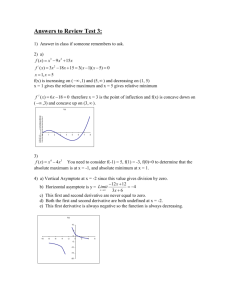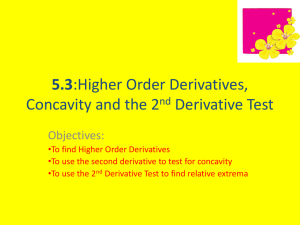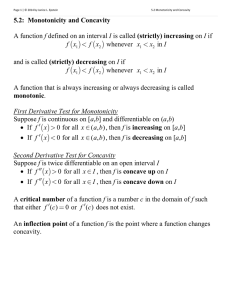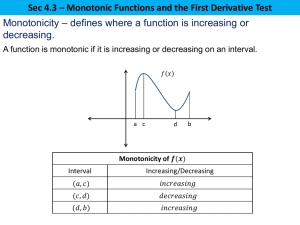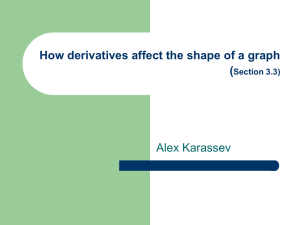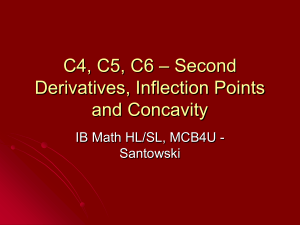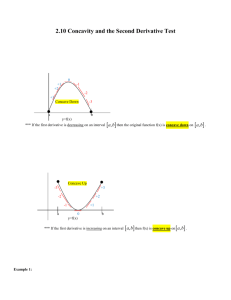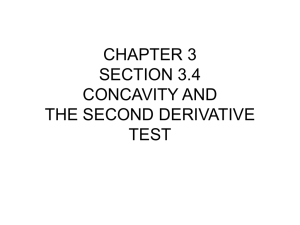First & Second Derivative Test
advertisement
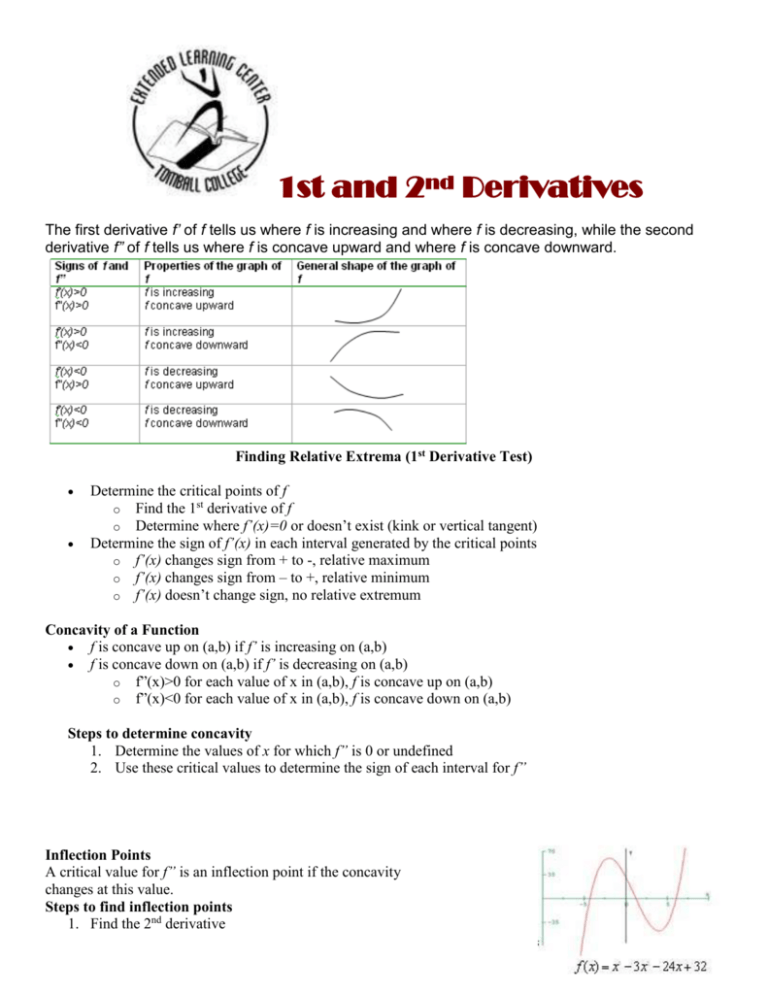
1st and 2nd Derivatives The first derivative f’ of f tells us where f is increasing and where f is decreasing, while the second derivative f” of f tells us where f is concave upward and where f is concave downward. Finding Relative Extrema (1st Derivative Test) Determine the critical points of f o Find the 1st derivative of f o Determine where f’(x)=0 or doesn’t exist (kink or vertical tangent) Determine the sign of f’(x) in each interval generated by the critical points o f’(x) changes sign from + to -, relative maximum o f’(x) changes sign from – to +, relative minimum o f’(x) doesn’t change sign, no relative extremum Concavity of a Function f is concave up on (a,b) if f’ is increasing on (a,b) f is concave down on (a,b) if f’ is decreasing on (a,b) o f”(x)>0 for each value of x in (a,b), f is concave up on (a,b) o f”(x)<0 for each value of x in (a,b), f is concave down on (a,b) Steps to determine concavity 1. Determine the values of x for which f” is 0 or undefined 2. Use these critical values to determine the sign of each interval for f” Inflection Points A critical value for f” is an inflection point if the concavity changes at this value. Steps to find inflection points 1. Find the 2nd derivative 2. Use the 2nd derivative to test for concavity (see above) 3. If there is a change in sign from left to right of the test value, it’s an inflection point. Second Derivative Test The second derivative test is an alternative procedure for finding whether a function f has a relative extremum at a critical value c. It is applicable only when f” exists and is therefore less versatile than the first derivative test. Also, it is inconclusive when f”(c) is equal to zero at a critical point of f and is inconvenient to use when f” is difficult to compute. However, when f” is easy to compute, use the second derivative test as this involves just the evaluation of f” at the critical point(s) of f. 1. Determine f’(x) and f”(x). 2. Find all the critical points of f at which f’(x)=0. 3. Determine f”(c) for each critical point c. a. If f”(c)<0, then f has a relative maximum at c. b. If f”(c)>0, then f has a relative minimum at c. c. If f”(c)=0, the test fails; that is, it is inconclusive.

